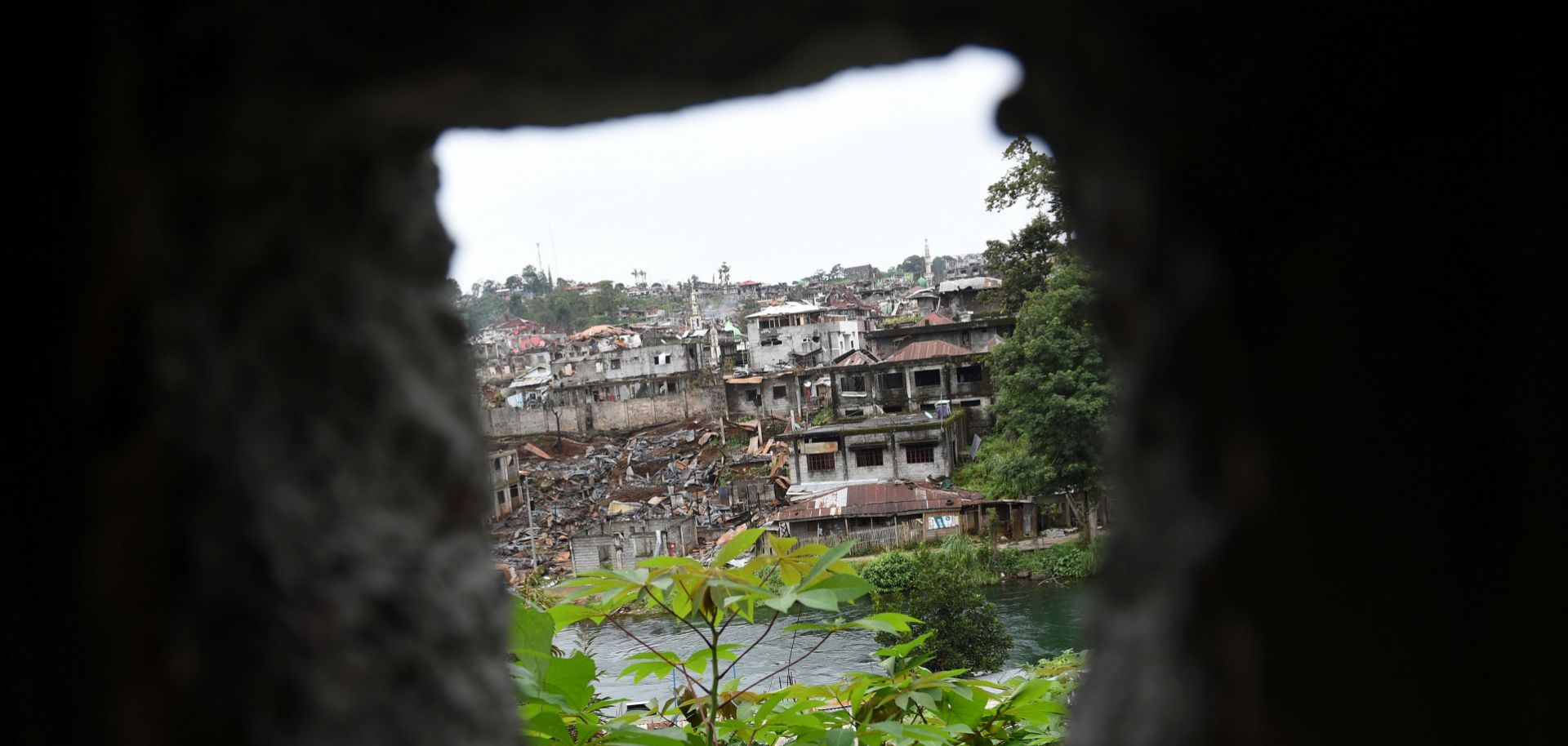ASSESSMENTS
Marawi City: The High-Water Mark of Southeast Asian Terrorism
Aug 16, 2017 | 20:31 GMT

A look at Marawi City shows that Philippine jihadist groups have taken a major gamble on the siege, since the Philippine military has forced them to engage in conventional combat.
(TED ALJIBE/AFP/Getty Images)
Highlights
- As enemy forces unite against Abu Sayyaf and the Maute group, they will amplify the significant losses the Philippine jihadists have endured.
- Counterterrorism forces in Southeast Asia and beyond will keep working together to prevent a jihadist base from growing in the region.
- The uprising in Marawi City will represent a high-water mark for jihadists in Southeast Asia, rather than a rising tide of attacks in the region.
Subscribe Now
SubscribeAlready have an account?
